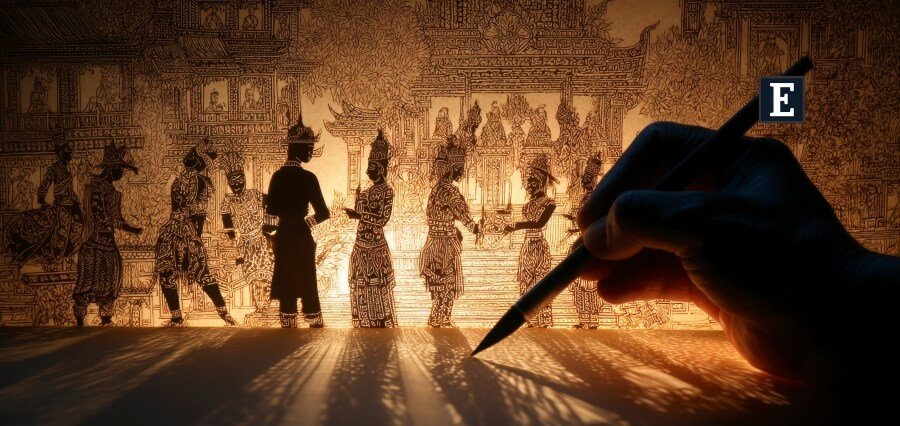The Writer’s Evolution
One of the ancient and most influential traditions of humans is storytelling. From cave drawings to fireside stories, from ancient epics to religious literature, stories have made civilisations, conveyed knowledge and linked generations. However, though the art form of storytelling has stayed with the times, the means, demands, and platforms have changed exponentially.
The authors of today find themselves in a situation, as they have to refer to the traditional narrative on one hand, but consider the modern methods that would fit the digital-first user, short attention span and novel forms of interaction.
This article investigates the ways that modern writers can balance the old and the new, the heart and hack, the tradition and the technology.
What Traditional Storytelling Still Gets Right
Classic narratives are eternal because of the fact that they touch on the emotional and psychological framework of the human experience. Love, loss, conflict and redemption, as well as archetypes and linear plot, and so many other things that have become ingrained in our societal psyche.
Or just think of a three-act play of setup, confrontation, resolution. It is a form which has roots tracing back to Aristotle, but which can be traced to being the structure behind much of the modern novel, film and even web programs. Similarly, the character arc wherein a person develops through challenges, which is called the hero, has continued to be a gold standard of storytelling in any genre.
Such underlying elements work to have a feeling of familiarity and consistency. They provide the readers and the viewers with emotional payoff and thematic resolution, two things that never go out of fashion.
What’s Changing: The Rise of Modern Storytelling Techniques
Although the traditional structures are not a waste of time, the development of new storytelling methods represents the changing means of how individuals intake and engage with content. Attention spans are getting shorter, platforms are more interactive, and audiences are more participatory.
These are some of the changes in storytelling:
- Nonlinear Narratives
The realistic novels of today are disposed to abandon chronology to embrace complexity. Psychological richness and layered mystery are possible using flashbacks and dual timelines, and fractured perspectives. The novel reminds me of ‘This Is Us’ or ‘The Midnight Library’, one of the narratives that comes to the point where readers are forced to put the pieces together.
- Multi-Platform / Transmedia Storytelling
Tales of today do not reside within books or a single screen all the time. They include social media, podcasts, YouTube shorts, and interactive websites. This method, which has been referred to as transparent storytelling, produces a more engaging experience. The Marvel Universe can be taken as an exemplary case in point, as the movies, TV series and comics create a single huge meta-plot.
- User-Driven & Interactive Narratives
Modern audiences and contemporary examples of storytelling, such as “choose-your-own-adventure” formatted TV shows on Netflix (Bandersnatch) or video games like Life Is Strange, frequently entertain in a form of a co-creation audience experience. The narrative and the story not only pass through the consumer, but they also affect them. Authors are now preparing their stories with the use of branching plots and optional endings, “as a personalization craving is on the rise.”
- Genres As Marginal Voices & Smashing Forms
Authors today are freer in experimentation than ever before. Graphic novels are a mixture of art and fiction. Podcasts are a mix of journalistic and dramatized shows. Insta-poetry reduces literature to bits of knowledge. Novels themselves are playing with form now-in certain text messages are substituting chapters. These methods modernize the process of storytelling without sacrificing any narrative purpose.
Bridging the Gap: How Writers Can Balance Both
Striking a balance between innovation and tradition is not a matter of deciding which side to use; it is a matter of synergy. This is how the writers can combine the two approaches:
Respect the framework, disobey intelligently: Be familiar with the traditional arcs-than violate or reverse them to make a point. The reader is commonly expecting an ending, but the writer can resist such expectations and provide an open ending that holds a sense.
Incorporate contemporary technology: Use this to enhance, not to distract. Perhaps a tweet or a text message in a novel will come across as gimmicky unless it gives some depth. The modern format shouldn’t only be new but also add emotional refinement or voice.
Stay emotionally accurate: If you are writing a haiku, serial podcast, or anything in between, emotional impact is the soul of storytelling. The presentation will not be important when the sentiment is genuine.
Be audience aware, not audience-driven: Know how your audience reads or watches these days-but do not feel the need to be audience-driven. Form should follow story, not the story the form.
The Writer’s Evolution
They are not wordsmiths anymore; they are experience designers. They connect past and present, text and technology, classical feelings and topicality.
Storytelling is the same, but it is the way we give it expression. In short, like in all other things, a world that is changing with each day, perhaps the most effective tales are those that have the essence of tradition with the gloss of contemporary skill.
Final Thought
The current use of new methods of storytelling is not going to endanger literary tradition; on the contrary, it is going to become its logical continuation. When writers learn how to combine the two, they do not dilute them. Instead, they aspire to both.
Read Also: The Psychology Behind Transformative Literary Influence

